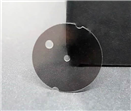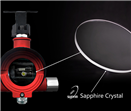The first generation of semiconductors replaced the bulky tubes, bringing the development of the microelectronics industry with integrated circuits as the core and the leap of the entire IT industry, widely used in information processing and automatic control.
Although silicon has many superior electronic properties, these features are already being used to the limit. Scientists have been looking for semiconductor materials that can replace silicon to make future electronic devices, and then compound semiconductors are born.
In recent years, with the unprecedented development in the fields of power semiconductor devices, industrial semiconductors, automotive power electronics, etc., the third generation of semiconductor materials has become more and more prominent in its importance and superiority. At present, developed countries have listed the development of third-generation semiconductor materials and related devices as important emerging technologies in semiconductors.
 Compound semiconductor materials have significant advantages
Compound semiconductor materials have significant advantages With the continuous expansion of semiconductor device applications, especially in special occasions, semiconductors can remain stable under high temperature, strong radiation, high power and other environments. The first and second generation semiconductor materials can't do anything, so the third generation semiconductors material.
The third generation semiconductors mainly include gallium nitride (GaN), silicon carbide (SiC), zinc oxide (ZnO), diamond, and aluminum nitride (AlN).
Compared with the first and second generation semiconductor materials, the third generation semiconductor materials have the advantages of high thermal conductivity, high breakdown field strength, high saturation electron drift rate, etc., which can meet the requirements of modern electronic technology for high temperature, high power, high voltage, The new requirements of high frequency and anti-radiation and other harsh conditions, from the perspective of its material superiority, have considerable development potential, I believe that with the deepening of research, its application prospects will be very broad.
A special subset of SOI is the sapphire-on-silicon process, commonly referred to in the industry as Ultra CMOS. Ultra CMOS is currently produced on standard 6-inch process equipment and the 8-inch line has been successfully tested. The demonstration yield is comparable to other CMOS processes.
There are big differences between GaAs production methods and traditional silicon wafer production methods. They are manufactured by epitaxial technology. The diameter of the wafer is only 4-6 inches, while the diameter of the conventional silicon wafer is 12 inches, which has a large technical and operational precision. In addition, Lei wafer production requires specialized equipment, which makes GaAs technology cost higher than traditional silicon-based technology. There are currently two types of epitaxy, one is chemical MOCVD, and the other is physical MBE.

GaN is a new upgrade based on GaAs, which is superior in performance and suitable for microelectronics and optoelectronics. In the field of microelectronics, it mainly covers wireless communication, optical communication, wireless local area network, automotive electronics, military electronic products, etc. The field of optoelectronics is RF IC, which is embodied in communication components such as PA and LNA.
Expected to completely replace traditional semiconductors
From the application field, the first generation of semiconductor silicon (Si), mainly used in the field of data computing, the second generation of semiconductor gallium arsenide (GaAs), mainly used in the field of communications, both have certain limitations.
The third generation of wide bandgap semiconductors, silicon carbide (SiC) and gallium nitride (GaN), can be widely used in various fields due to their high temperature stability, high photoelectric conversion capability, and lower energy loss. Whether it is consumer electronics, lighting, new energy vehicles, wind turbines, aircraft engines, missiles and satellites, there is great expectation for this high-performance semiconductor, and it is expected to completely replace traditional semiconductor materials in the future.
The third generation of semiconductor materials has shown extremely important strategic application value, and is expected to break through the development bottleneck of the first and second generation semiconductor material application technologies, and innovate new technology fields that open up the needs of the times, not only in the information field, but also into the energy field. Play an extremely important role.








